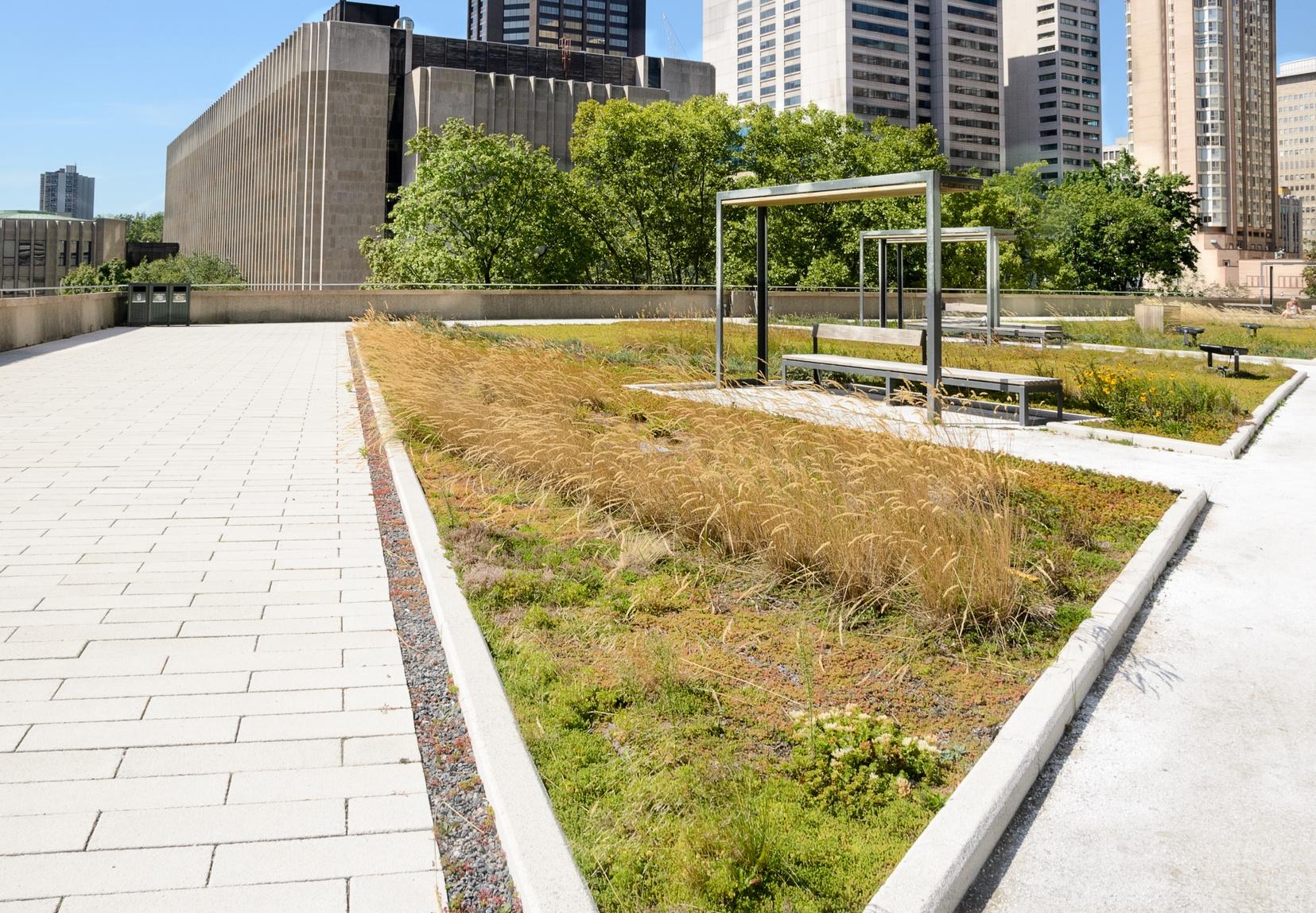Today’s vegetated roof systems are not the old log cabin with a sod roof. They include a waterproofing layer, drainage, growing media, and plants.
Today’s vegetated roof system, or green roof, offers many benefits. A concentration of vegetated roof systems in an urban area can reduce a city’s average temperature during the summer. A vegetated roof system can lower heating and cooling costs, help to insulate a building for sound, filter and reduce rain runoff, increase real estate value, and increase the life of a roof. It can even attract beneficial insects, birds, bees, and butterflies.
There are three types of these systems: extensive, semi-intensive, and intensive.
Extensive is the least expensive and the lightest weight. Generally 2″ to 5″ deep and planted with sedum, moss, or grass, they require the least maintenance at once or twice a year.
Semi-intensive vegetated roof systems require a deeper soil layer, but more types of plantings are used. In addition to the mosses, grasses, and Sedum of extensive roofs, semi-intensive plantings include herbs, flowering plants, taller grasses, and small shrubs. These plants require maintenance at least every month.
Intensive gardens require the deepest soil, but they also accommodate all types of plantings, including large shrubs and trees. Maintenance of a vegetated roof system of this type is ongoing.
One thing you must consider is the structural load, which is the saturated weight of the plants at maturity, and the weight of the people who will be on the roof.
The Environmental Protection Agency estimates the cost of a green roof to start at $10 to $25 per square foot.
Please contact us for more information on this green alternative.




